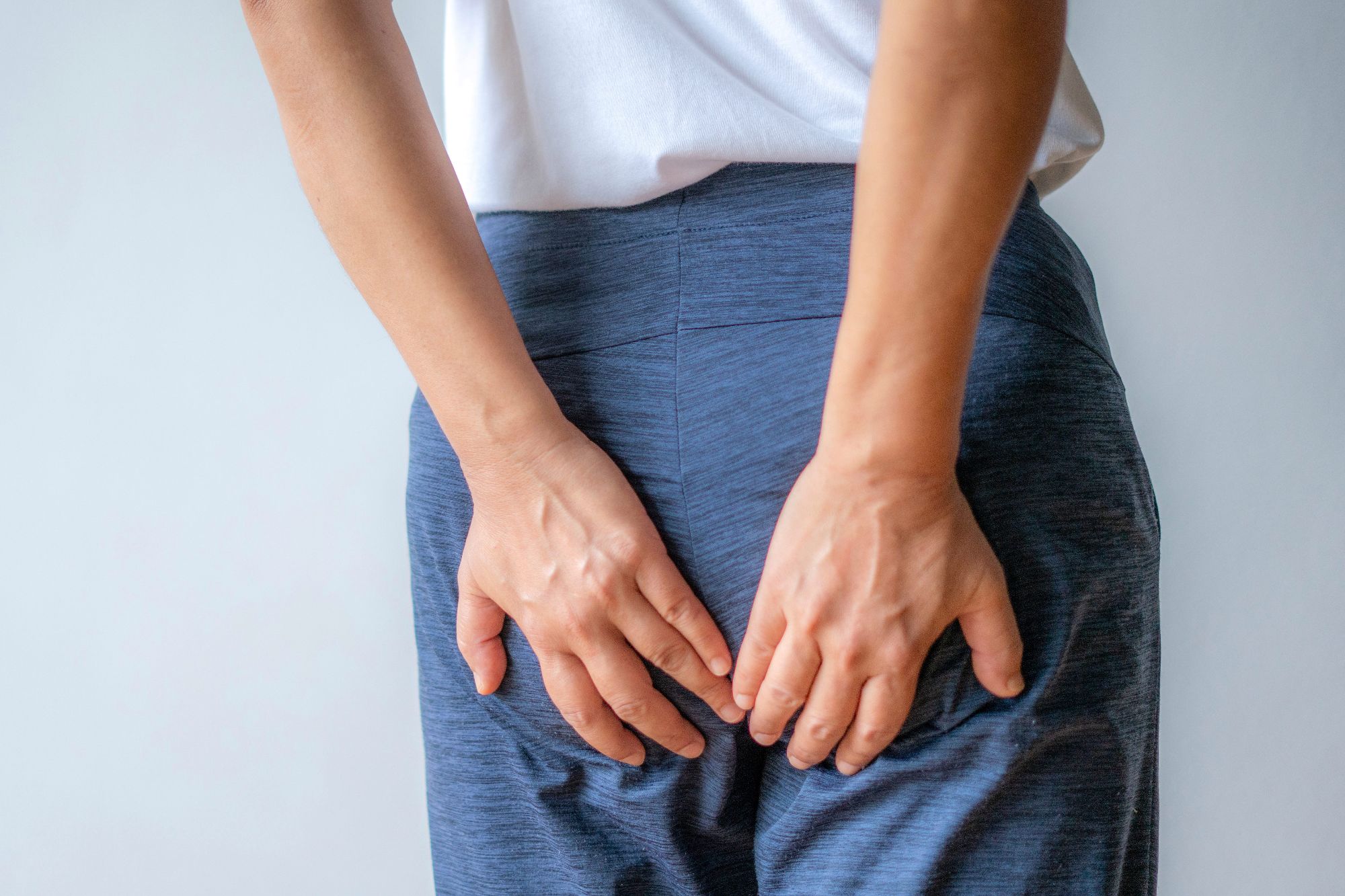

FAQs
Why Do I Fart When Working Out
Modified: August 5, 2023
Discover the answer to the common question of why you may experience flatulence during exercise. Gain insight and tips on preventing excessive gas while working out.
(Many of the links in this article redirect to a specific reviewed product. Your purchase of these products through affiliate links helps to generate commission for Under-tec.com, at no extra cost. Learn more)
Table of Contents
Introduction
Have you ever experienced the embarrassing and inconvenient situation of farting while working out? It’s not uncommon for gas to escape from your body during exercise, causing you to wonder why this happens. While it may be a bit awkward to discuss, understanding the science behind farting during workouts can help you navigate through this natural bodily function with ease.
Farting, also known as flatulence, is the result of gas accumulation in your digestive system. This gas can escape from your body through the rectum, making a sound and sometimes accompanied by an unpleasant odor. While farting is a normal biological process, it can become more noticeable and more frequent during exercise.
In this article, we will explore the various factors that contribute to farting during workouts. From increased digestion to swallowing air and even the impact of certain foods and beverages, there are several reasons why you might experience flatulence while exercising. By gaining a better understanding of these factors, you can take steps to minimize farting and make your workouts more comfortable.
So, if you’ve ever wondered why you fart when working out, let’s delve into the science behind it and find out how to address this bodily function in a way that keeps both your physical and social well-being intact.
The Science Behind Farting
Farting, or passing gas, is a normal bodily function that occurs when gas builds up in the digestive system and is released through the rectum. It’s estimated that the average person passes gas anywhere from 13 to 21 times a day. While this is generally a discreet and non-disruptive process, the act of working out can often amplify the frequency and volume of farting.
There are several scientific reasons why you may experience increased flatulence during exercise:
- Increased Digestion: When you exercise, your body diverts blood flow away from the gastrointestinal (GI) system and towards the working muscles. However, the body still needs to digest food during this time, resulting in an accelerated digestive process. As a result, more gas is produced, increasing the likelihood of farting during a workout.
- Swallowing Air: When you exercise, you may inadvertently swallow more air than usual. This can happen through gulping water, breathing heavily, or taking in larger amounts of air during high-intensity exercises. The swallowed air enters your digestive system and can contribute to increased farting.
- Increased Blood Flow to the Digestive Tract: Physical activity increases blood flow to the muscles and organs, including the digestive tract. This increased blood flow can enhance the function of the digestive system, leading to faster digestion and increased gas production.
- Impact of Certain Foods and Beverages: The foods and beverages you consume prior to a workout can greatly impact your farting frequency. Some foods, particularly those high in fiber, carbohydrates, and certain sugars, are known to be gas-producing. Consuming these foods before exercising can contribute to increased flatulence.
- Muscle Movements and Intestinal Gas: As you engage in physical activity, the contraction and relaxation of your muscles can also impact the movement of gas through your intestines. This can lead to a more noticeable release of gas during your workout.
Understanding the science behind farting during exercise can help alleviate any concerns or embarrassment you may feel. It is a natural bodily function that is influenced by various factors related to physical activity and digestion. By being aware of these factors, you can make adjustments to your exercise routine and diet to minimize farting and make your workouts more comfortable.
Increased Digestion during Exercise
During exercise, your body goes through a series of physiological changes to meet the demands of increased activity. One of these changes involves diverting blood flow away from non-essential functions, such as digestion, and towards the working muscles. While this redirection of blood flow is necessary for optimal performance, it can also lead to increased digestion and subsequent flatulence.
When exercise stimulates the sympathetic nervous system, it can accelerate the digestive process. The body releases digestive enzymes and increases the muscular contractions of the GI tract, resulting in faster breakdown and absorption of nutrients. As a consequence, gas production also increases, leading to a greater likelihood of farting during exercise.
The types of exercises you engage in can also influence the level of digestion and subsequent gas production. High-intensity exercises, such as running or cardio workouts, tend to stimulate the digestive system more than low-intensity exercises like yoga or stretching. This increased stimulation can lead to greater gas production, making farting more noticeable during high-intensity workouts.
Furthermore, the duration and timing of your exercise play a role in increased digestion. Longer workouts provide more time for food to be digested and for gas to accumulate in the digestive system. If you’ve consumed a meal before your workout, the combination of increased digestion and physical activity can result in higher levels of gas production, making you more susceptible to farting.
To minimize farting during exercise, consider the following tips:
- Allow adequate time for digestion before engaging in a workout. Eating heavy or gas-inducing foods right before exercise may increase farting.
- Include a warm-up period before your main training session. This allows your body to gradually transition from a resting state to an active one, minimizing the chances of sudden gas release.
- Stay hydrated, but avoid gulping large amounts of water during your workout to prevent swallowing excess air.
- Gradually increase the intensity and duration of your workouts to give your body time to adjust and minimize digestive disturbances.
- Experiment with different foods and identify those that tend to cause more gas. Adjust your pre-workout meal accordingly to reduce discomfort.
Increased digestion during exercise is a natural response by the body to meet the demands of physical activity. Understanding this process and implementing strategies to manage farting can help you feel more comfortable and confident during your workouts.
Swallowing Air during Exercise
When you exercise, especially during high-intensity activities like running or weightlifting, you may find yourself breathing heavily and taking in more air than usual. This increased inhalation of air can lead to unintentional swallowing of air, known as aerophagia, which can contribute to increased farting during exercise.
Aerophagia occurs when excess air enters the digestive system through the mouth and is swallowed into the stomach. While a small amount of air is swallowed regularly during normal breathing and eating, the increased ventilation and breathing rate during exercise can result in greater amounts of air being swallowed.
Swallowing excess air during exercise can lead to two main factors that contribute to increased farting:
- Increased Gas in the Digestive System: The air that is swallowed during exercise enters the digestive system and combines with other gases, such as those produced during digestion, to form intestinal gas. This gas buildup can lead to increased farting during and after a workout.
- Changes in Air Pressure: During physical activity, the movement and compression of muscles can cause changes in intra-abdominal pressure. This pressure buildup can contribute to the release of trapped gas in the digestive system, leading to farting.
To minimize farting due to swallowing air during exercise, here are some tips:
- Avoid drinking carbonated beverages before or during your workout, as they can increase the amount of gas in your digestive system.
- Breathe through your nose as much as possible during exercise to reduce the amount of air swallowed.
- Focus on diaphragmatic breathing, where you inhale deeply into your abdomen, rather than shallow chest breathing, to minimize air intake.
- Avoid wearing tight-fitting clothing around your abdomen, as it can interfere with proper digestion and lead to excess gas buildup.
- Take breaks and release trapped air during your workout if needed. This can be done by pausing and engaging in exercises or positions that promote gas release, such as gentle twists or forward bends.
By being mindful of your breathing patterns and minimizing the amount of air swallowed during exercise, you can help reduce the likelihood of farting and make your workouts more comfortable.
Increased Blood Flow to the Digestive Tract
During exercise, blood flow is directed to the working muscles to provide them with oxygen and nutrients. However, this increased circulation doesn’t exclude the digestive system. In fact, physical activity stimulates blood flow to the gastrointestinal (GI) tract, which can lead to greater digestive activity and increased gas production.
When blood flow increases to the digestive tract, it enhances the function of the gastrointestinal organs, including the stomach, small intestine, and large intestine. This increased blood supply helps to improve digestion and nutrient absorption, facilitating the breakdown of food and the release of gas as a byproduct of the digestive process.
The additional blood flow to the digestive organs can also lead to faster peristalsis, which is the rhythmic muscle contractions that move food through the GI tract. These contractions, which become more active during exercise, can contribute to the movement of gas in the intestines, potentially resulting in increased farting.
Factors that can influence the impact of increased blood flow to the digestive tract on farting during exercise include the intensity and duration of your workouts, as well as the type and timing of your meals. Here are some tips to minimize farting due to increased blood flow:
- Allow sufficient time for digestion before your workout. Eating a heavy meal too close to exercise can increase the likelihood of farting.
- Choose foods that are easily digestible and less likely to cause gas production, particularly before intense workouts.
- Stay hydrated during your workout, as dehydration can slow down digestion and contribute to gas buildup.
- Avoid eating large amounts of high-fiber foods before exercise, as they can lead to increased gas production.
- Experiment with meal timing to find what works best for your body. Some individuals may find it beneficial to consume a small, easily digestible snack before a workout, while others prefer to exercise on an empty stomach.
By understanding how increased blood flow to the digestive tract during exercise affects farting, you can make informed choices about your pre-workout meals and hydration to help minimize discomfort and gas production.
Impact of Certain Foods and Beverages
The foods and beverages you consume before exercising can have a significant impact on the amount and frequency of farting during your workouts. Some foods are known to be more gas-producing than others, particularly those that are high in fiber, carbohydrates, and certain sugars. Understanding the impact of these foods can help you make informed choices to minimize farting during exercise.
Foods that are high in indigestible carbohydrates, such as beans, lentils, and cruciferous vegetables like broccoli and cauliflower, are notorious for causing gas. These carbohydrates are fermented by the bacteria in your digestive system, producing gas as a byproduct. Consuming these foods before a workout can lead to increased farting during exercise.
In addition to high-fiber foods, certain sugars can also contribute to increased gas production. These include lactose, found in dairy products, and fructose, found in fruits and some sweeteners. Some individuals may have difficulty digesting these sugars, leading to increased gas and bloating, particularly during exercise when digestion is accelerated.
Beverages can also play a role in gas production during exercise. Carbonated drinks, such as soda and sparkling water, introduce extra gas into your digestive system, which can increase farting. Additionally, consuming drinks that contain artificial sweeteners like sorbitol or mannitol can have a similar effect, as these sweeteners can be difficult to digest and lead to increased gas production.
To minimize farting caused by certain foods and beverages, consider the following tips:
- Avoid consuming gas-producing foods, such as beans, broccoli, and carbonated beverages, in the hours leading up to your workout.
- Experiment with different pre-workout meal options to identify which foods work best for your digestive system.
- Consider reducing your intake of high-fiber foods before intense workouts to minimize gas production.
- Ensure that you are properly hydrated before exercising, as dehydration can exacerbate gas-related discomfort.
- Pay attention to your body’s individual responses to different foods and beverages, and adjust your diet accordingly to find what works best for you.
By being mindful of the impact of certain foods and beverages on gas production, you can make conscious choices about your pre-workout nutrition to minimize farting and discomfort during exercise.
Muscle Movements and Intestinal Gas
When you engage in physical activity, the contraction and relaxation of your muscles can impact the movement of gas through your intestines. This can lead to a more noticeable release of gas, and consequently, farting, during your workouts.
As you exercise, the movements of your muscles, particularly those in the abdominal area, can contribute to the movement of gas within your intestines. This movement, known as motility, can cause trapped gas to shift and be released through the rectum, resulting in farting.
The intensity and type of exercises can influence the extent of muscle movements and the subsequent release of gas. High-impact activities like jumping or running can create more forceful muscle contractions, potentially leading to increased gas movement and farting. Additionally, exercises that involve bending or twisting movements, such as yoga poses or certain weightlifting exercises, can also contribute to the release of trapped gas.
Furthermore, certain abdominal exercises, like crunches or sit-ups, can compress the digestive organs and potentially displace gas. This compression and displacement can increase the likelihood of farting during and after these specific exercises.
While farting is a natural occurrence resulting from muscle movements and the release of intestinal gas, there are a few strategies you can implement to minimize farting during your workouts:
- Avoid eating a large meal or consuming gas-producing foods close to your workout, as this can increase the amount of gas in your intestines.
- Engage in exercises that promote the movement and release of trapped gas, such as gentle twisting movements or movements that stretch the abdominal area.
- Take breaks during your workouts to release trapped gas if needed, by pausing and engaging in exercises or positions that promote gas release.
- Listen to your body and avoid exercises or movements that cause discomfort or exacerbate gas-related symptoms.
- Practice diaphragmatic breathing during your workouts to help relax the abdominal muscles and reduce excessive gas movement.
Understanding the relationship between muscle movements and intestinal gas can help you navigate through farting during exercise. By implementing these strategies and being attuned to your body’s responses, you can minimize discomfort and embarrassment related to farting while working out.
Tips to Reduce Farting during Workouts
If you find farting during workouts to be uncomfortable or embarrassing, there are several strategies you can implement to help minimize gas and reduce the likelihood of farting. While it is important to note that farting is a natural bodily function, these tips can help make your workouts more comfortable and enjoyable:
- Be mindful of your pre-workout nutrition: Avoid consuming gas-producing foods and beverages before your workouts. These include high-fiber foods, carbonated drinks, and foods that are known to cause gas, such as beans and cruciferous vegetables.
- Proper hydration: Make sure to stay hydrated before, during, and after your workouts. However, be cautious not to gulp down large amounts of water quickly as this can lead to swallowing excess air. Sip water throughout your workout to stay hydrated without introducing additional gas into your digestive system.
- Allow adequate time for digestion: Avoid eating large meals immediately before working out. Allow sufficient time for your body to digest your food, generally 1-2 hours, to prevent digestion-related discomfort and increased gas production.
- Experiment with meal timing: Some individuals find it helpful to exercise on an empty stomach to minimize gas and discomfort. Others prefer to have a small, easily digestible snack before their workouts. Experiment to find the approach that works best for you.
- Manage your breathing: Pay attention to your breathing techniques during your workouts. Aim for diaphragmatic breathing, which involves inhaling deeply into your abdomen, to minimize the amount of air swallowed and reduce gas build-up.
- Include warm-up and cool-down periods: Incorporate a proper warm-up and cool-down routine before and after your workouts. This allows your body to adjust gradually, reducing the chances of sudden gas release during exercise.
- Avoid tight-fitting clothing: Opt for loose, comfortable workout attire that doesn’t compress your abdomen. Tight-fitting clothing can interfere with digestion and contribute to increased gas production.
- Listen to your body: Pay attention to how your body responds to certain exercises. If you notice that certain movements or exercises exacerbate gas-related discomfort, modify or avoid them to minimize farting.
Remember, farting during workouts is a normal bodily function, and everyone experiences it to some degree. However, by implementing these tips, you can manage and reduce gas production, making your workouts more comfortable and allowing you to focus on your fitness goals.
Conclusion
Farting during workouts can be an embarrassing and uncomfortable experience for many individuals. However, it is essential to understand that farting is a natural bodily function influenced by various factors related to exercise and digestion. By gaining a deeper insight into the science behind farting during workouts, you can take steps to minimize gas production and reduce the likelihood of farting.
Increased digestion during exercise, swallowing air, increased blood flow to the digestive tract, certain foods and beverages, and muscle movements all contribute to the farting phenomenon during workouts. By being mindful of your pre-workout nutrition, staying hydrated, allowing time for digestion, and paying attention to your breathing techniques, you can minimize gas build-up and discomfort.
Understanding that farting is a normal occurrence during exercise can help alleviate any concerns or embarrassment you may have. Implementing strategies such as proper nutrition, hydration, and breathing techniques can make your workouts more comfortable and enjoyable.
Remember, everyone experiences farting to some degree during exercise. It is a natural process that indicates your body’s efficient functioning. By following the tips provided in this article, you can navigate through farting during workouts with confidence and focus on achieving your fitness goals.










